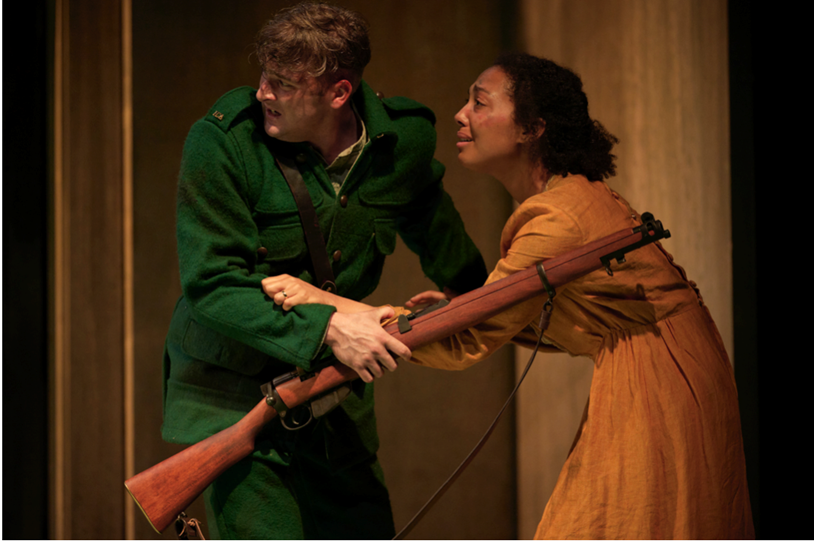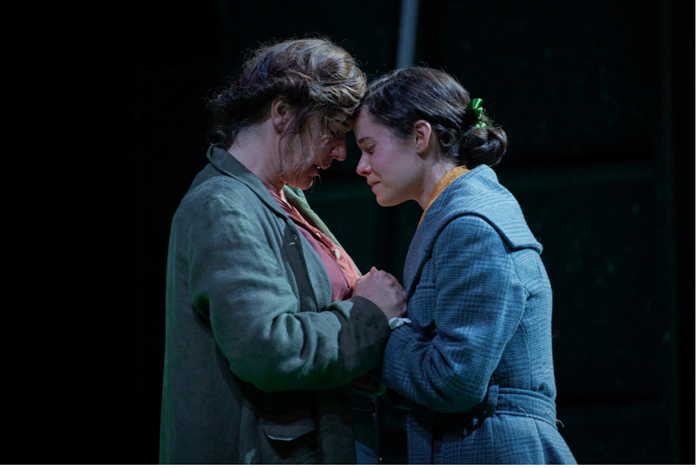
Dramatising Revolution: Review of a trilogy of Sean O'Casey's plays
Seán O’Casey – the first proletarian dramatist writing in English – made his theme the struggle for the emancipation of the Irish people, and by extension of all working people. In Ireland, O’Casey is (unfairly) best known for his first three plays, examining the Irish working class at key moments of Irish history. The Shadow of a Gunman (1923) is set during the War of Independence, Juno and the Paycock (1924) at the time of the Civil War, and The Plough and the Stars (1926) takes place in the months leading up to and during the Easter Rising.
To coincide with Ireland’s Decade of Centenaries, Galway’s acclaimed Druid Theatre company is staging these O’Casey plays this summer and autumn in Ireland and the US. The plays are being performed both individually and in an unusual single day theatre marathon.
When determining in which order to perform the plays in the Trilogy performances, Garry Hynes, artistic director, decided to show them in historical chronology, not in the order of writing. While the reasoning is understandable, the disadvantage is that the audience do not see the marked development of O’Casey’s thinking and artistic skill. A further, significant, drawback is starting off the day with the play that caused the greatest political outcry by the revolutionaries involved in the 1916 Rising, and still outrages people today who support the vision of the Easter Proclamation. This overshadows the reception of the other two plays.

Sophie Lenglinger as Nora, with Liam Heslin as Jack, in The Plough and the Stars. Photograph: Ros Kavanagh
The Proclamations’s historic declaration of an independent democratic Republic receives a passing, dismissive mention by the ineffectual socialist in the play, the Young Covey. Otherwise, the cast is made up of Dublin tenement dwellers of various levels of insight and involvement in the events gripping Dublin. Those on the fringe of the revolutionary movement, it is suggested, are unprincipled with only their personal promotion and glory in mind. This is untrue to history and justifiably caused much uproar and serious criticism of O’Casey at the time.
The playwright’s political standpoint which informs the play stems from his disagreement with Connolly, specifically his strategy of a broad anti-imperialist alliance. While Connolly’s analysis was that national and social liberation were the condition of one another, O’Casey differed, seeing only one part, not the whole.
As a result, the dramatist in all three plays presents us with an isolated, leaderless working class that was unable to rise to the challenge of the times. We meet working-class Dubliners living in tenements, in the most deprived of circumstances. Their class consciousness is not highly developed. The absence of leadership, organization and an embracing working-class philosophy is evident as they reach various levels of understanding, but little will to act against their dire circumstances. While in each of the plays, upheavals outside the slums impact on their lives, the movement at the heart of the struggles outside seems to have little connection with them and their needs and acts independently of them.

Caitríona Ennis as Minnie Powell, Marty Rea As Donal Davoren, and Rory Nolan as Seumas Shields in The Shadow of a Gunman. Photograph: Ros Kavanagh.
In Shadow, the real gunman passes through this community unrecognized and indirectly causes the death of Minnie Powell. In Paycock, this movement claims the lives of two young men, one of whom had already withdrawn. In Plough, the movement is portrayed as a disembodied voice calling for blood sacrifice. No truly positive representatives of this movement appear on stage. While Jack Clitheroe (Plough) is a member of the Citizen Army, he is not depicted as a person who will move the class forward. One of the most class-conscious characters in the trilogy, Fluther Good, is not a member of the organized movement and represents a pragmatic and grounded perspective. While he supports the nationalist movement, he is critical of the leaders and of what O’Casey sees as the romanticized ideals of the Rebellion.
The slum dwellers are presented as people who thrive on illusions and myths about the heroic past. We find this in Minnie Powell (Shadow), or Boyle (Paycock) or those wishing to escape the greater world around them, such as Nora Clitheroe (Plough). On the other hand, it is among this very community that all the ingredients necessary for a conscious working class movement are found: despite their weaknesses, they are resourceful, creative and realist, such as Shields and Davoren (Shadow), Juno (Paycock) and Fluther Good (Plough), people who under the right circumstances could combine all that is necessary, appreciate the needs of the people and act in their interests.
Indeed, at the end of Paycock, Juno leaves together with Mary, to start a new life. So despite these illusions and weaknesses, the proletarian O’Casey presents the Irish working class as ultimately able to revolutionize reality. Any production of the trilogy must accentuate this potential. While Druid’s production allows the audience to see such potential in the characters in Shadow and Paycock, this is not the case in Plough, which fails to show the tragedy inherent in the play, linked to this unrecognized and unrealized potential, and all but reduces the tragedy to comedy, even at times farce. The notable exception here is Sophie Lenglinger’s portrayal of Nora Clitheroe. The farcical is particularly evident in the representation of Fluther Good (Aaron Monaghan), who in the Druid production is cast as a buffoon.

Hilda Fay as Juno Boyle and Zara Devlin as Mary Boyle in Juno and the Paycock. Photo by Ros Kavanagh.
O’Casey sheds light on the lives of ordinary people during this revolutionary period in Irish history. He invites a critical examination of the impact of deprivation and ignorance on a revolutionary situation. The characters and their vivid, creative and powerful language express their potential for creating a better world for the working people. In their dramatic skill, they set the stage for O’Casey’s future work, which brilliantly critiques the Irish Free State and has the emancipation of the working class at its core, beginning with his superb anti-war play The Silver Tassie (1927).
Staging the tragedies today allows audiences to familiarize themselves with O’Casey’s views of this revolutionary epoch, and appreciate the dramatic and literary qualities of his work. Druid’s decision to depart from an all-white cast (Gabriel Adewusi and Sophie Lenglinger) helps to emphasize that issues of social inequality, political disillusionment, and the struggle for social justice continue to resonate with audiences worldwide.
